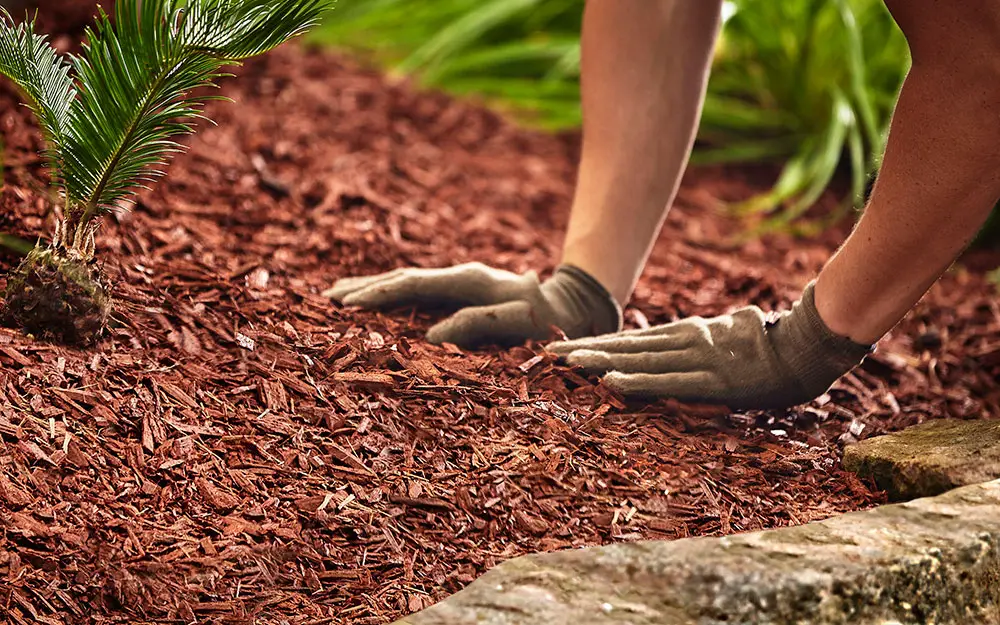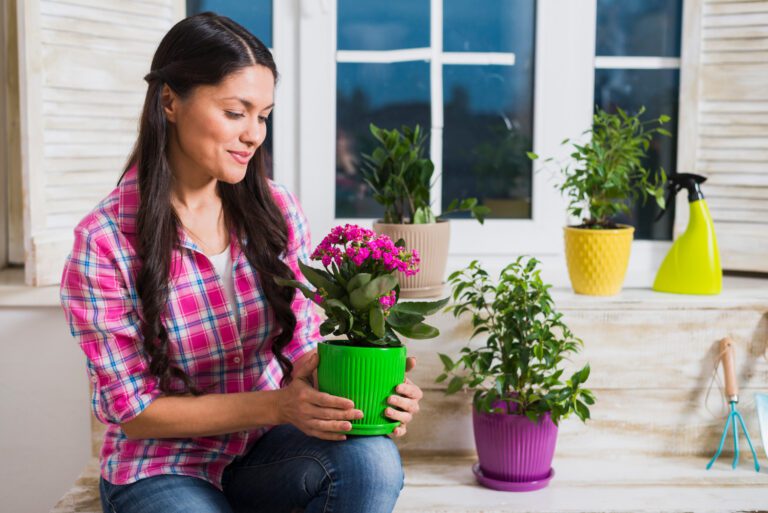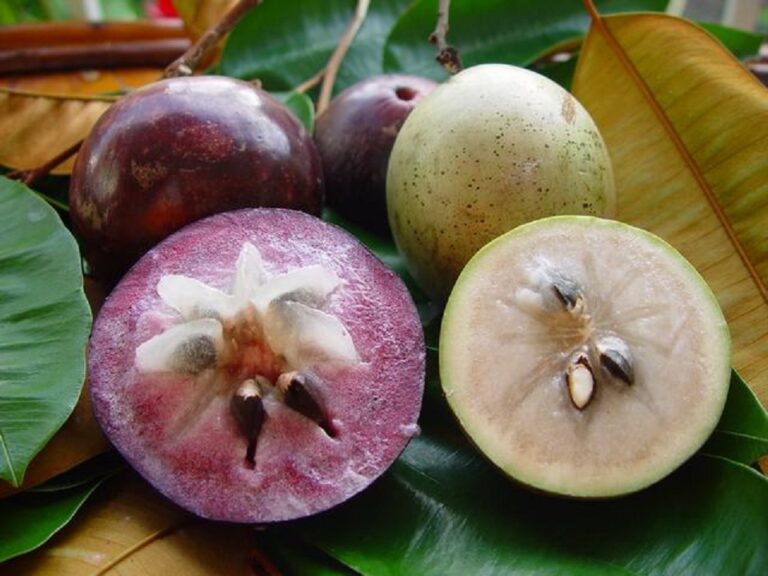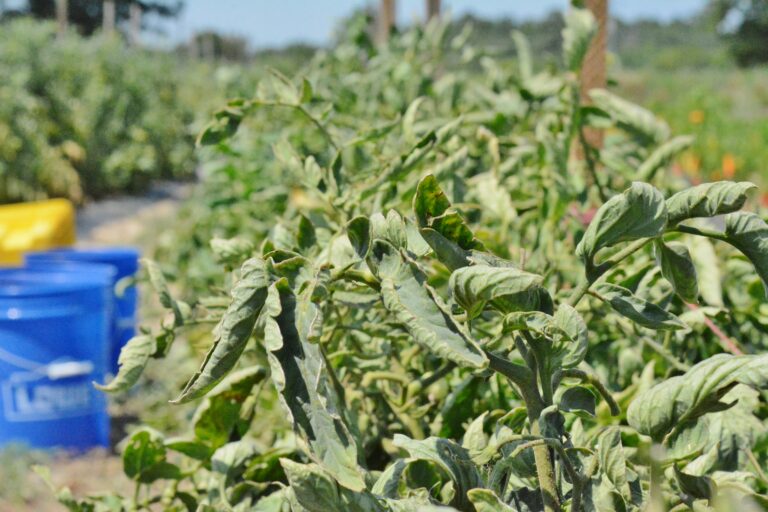24 Cheap Mulch Ideas to Save Money
Looking to spruce up your garden without breaking the bank? Imagine transforming your outdoor space with a variety of affordable mulch options that not only enhance the aesthetics but also nourish your plants. From creative DIY solutions to unconventional materials, there are countless cheap mulch ideas waiting to be explored. Join us as we unveil 24 budget-friendly mulch ideas that will help you save money while beautifying your garden.
With our expert tips and innovative suggestions, you’ll discover that achieving a stunning landscape doesn’t have to cost a fortune. Let’s dive into the world of inexpensive mulching and elevate your gardening game without emptying your wallet!
Table of Contents
The Benefits of Mulching Your Garden on a Budget
Mulching is a gardening technique that offers a wide range of benefits for both plants and gardeners. Not only does it help conserve water and suppress weeds, but it also improves soil health and enhances plant growth. The best part is that mulching can be done on a budget, making it accessible to all gardening enthusiasts.

Mulch acts as a protective barrier, limiting sunlight for weeds.
Fewer weeds mean less competition for your plants.
Organic mulches absorb water and reduce evaporation.
Consistent moisture benefits both plants and your water bill.
Mulch prevents rainwater from washing away soil.
It breaks the fall of water, reducing its impact on the ground.
Mulch prevents soil nutrients from being washed away by rain.
Organic mulch gradually decomposes, releasing nutrients into the soil.
Certain mulches, like cedar bark, repel insects due to natural oils.
Choose fragrant mulches for the best insect-repelling effect.
Organic mulch encourages earthworms to improve soil structure and nutrient cycling.
Mulch fills empty spaces, giving your garden a polished look.
It’s easy to maintain compared to other fillers like grass or groundcovers.
Remember, when adding mulch, avoid piling it against plant stems, and a layer of 2 to 4 inches is recommended for most plants. Now let’s delve deeper into each of these benefits and explore budget-friendly mulching options! 🌱🌿🌼
Natural Mulch Alternatives for a Thrifty Gardener
In a world where sustainable gardening practices are gaining increasing importance, finding natural mulch alternatives that are budget-friendly can be a game-changer for thrifty gardeners. By incorporating these alternatives into your garden, you not only save money but also contribute to the health of your plants and the environment.
| Mulch Type | Source | Benefits | Application |
|---|---|---|---|
| Grass Clippings | Easily obtained from lawn mowing | – Suppresses weeds by blocking sunlight- Retains moisture- Slow decomposition enriches soil | Spread a thin layer around plants |
| Fallen Leaves | Abundant during autumn | – Acts as a protective blanket against weeds- Retains moisture- Gradually releases nutrients into soil | Layer around plant bases |
| Wood Chips | Obtained from tree branches or chipped wood | – Long-lasting weed suppression- Enhances soil structure- Ideal for pathways and garden beds | Apply a thick layer around plants |
| Shredded Newspaper/Cardboard | Recycle old newspapers or cardboard boxes | – Suppresses weeds and conserves moisture- Biodegradable and eco-friendly- Enriches soil as it breaks down | Lay sheets under mulch or directly on soil |
| Coffee Grounds | Leftover coffee grounds from brewing | – Adds nitrogen to soil- Deters slugs and snails- Mix with other organic materials for balanced mulch | Sprinkle around plants |
| Nut Shells (e.g., Walnut) | Collect shells from nuts | – Provides texture and visual interest- Slow decomposition enriches soil- Acts as a natural pest deterrent | Crush and spread around plants |
Remember to adjust the thickness of the mulch layer based on the specific needs of your plants. Happy gardening! 🌱🌿🌼
Creative Ways to Recycle Household Waste as Mulch
Recycling household waste as mulch is not only an eco-friendly practice, but it can also be a creative and cost-effective way to nourish your garden. Instead of discarding certain household items, you can repurpose them into nutrient-rich mulch that will benefit your plants and help reduce waste. Here are a few creative ways to recycle household waste as mulch.

- Kitchen Scraps:
- Source: Fruit and vegetable peels, coffee grounds, eggshells.
- Benefits:
- Rich in nitrogen and essential nutrients.
- Composting kitchen scraps creates nutrient-rich mulch.
- Reduces landfill waste.
- Application: Compost and use resulting compost as mulch.
- Shredded Paper and Junk Mail:
- Source: Unwanted paper products (junk mail, cardboard, etc.).
- Benefits:
- Provides carbon for the soil.
- Suppresses weed growth.
- Retains moisture.
- Adds organic matter as it decomposes.
- Application: Spread directly on soil or add to compost pile.
Remember to adjust the thickness of the mulch layer based on your specific garden needs. These creative recycling methods not only benefit your plants but also contribute to a more sustainable environment. Happy gardening! 🌱🌿🌼
Utilizing Grass Clippings as a Low-Cost Mulch Option
Grass clippings, a commonly overlooked resource in the garden, can actually serve as a low-cost and effective mulch option. When properly used, grass clippings can help to retain moisture, suppress weeds, and improve the overall health of your plants.

Spread a thin layer of grass clippings around plant bases.
Clippings act as a natural barrier, reducing water evaporation.
Soil stays consistently moist, benefiting plant health.
Grass clippings block sunlight, inhibiting weed growth.
Fewer weeds mean less competition for nutrients.
Your garden looks neater and requires less maintenance.
Clippings gradually break down, releasing nutrients.
Nitrogen-rich content feeds plants naturally.
Soil quality improves over time.
Grass clippings are readily available from your own lawn.
No need to purchase expensive mulch.
Sustainable and budget-friendly.
Tips:
- Avoid using clippings treated with herbicides or pesticides.
- Spread clippings thinly to prevent matting or mold.
- Mix green (fresh) and brown (dried) clippings for balanced decomposition.
Remember, your lawn clippings can nourish your garden while minimizing waste. Happy gardening! 🌱🌿🌼
After using the VEVOR Push Lawn Sweeper for a while, I must say it has been quite a helpful addition to my lawn maintenance tools. It effectively picks up leaves, small twigs, and other debris, making the task of cleaning the yard much easier and faster than using a rake. The adjustable height knob allows me to customize the sweeping height according to the type of debris and the terrain, which adds to its versatility.
However, I did encounter some issues with the sturdiness of the product, especially when encountering softer ground or areas with mole tunnels. Despite this drawback, I found the sweeper to be overall efficient and a time-saver in keeping my yard clean and well-groomed.
- Efficient Cleaning: The VEVOR Push Lawn Sweeper efficiently cleans up leaves, grass clippings, pine needles, and other debris from lawns, gardens, or driveways.
- Adjustable Height: With an adjustable knob on the front, users can easily adjust the sweeper’s height to target different types of debris for effective cleaning.
- Large Capacity: It features a large capacity 7 ft³ mesh collection bag, allowing users to collect a significant amount of debris before needing to empty it.
- Durable Construction: Made of heavy-duty thickened steel and strong rubber wheels, this sweeper is built to withstand regular use and outdoor conditions.
- Maneuverability: Equipped with four spinning brushes, the sweeper offers decent maneuverability, making it easier to navigate around obstacles and uneven terrain.
- Assembly Instructions: Some users have reported that the assembly instructions are only provided in picture format, which can make it challenging to understand the assembly process.
- Soft Ground Limitation: The sweeper may struggle to perform effectively on very soft ground or areas with mole tunnels, as the wheels can get stuck and the bars may bend if forced.
- Inability to Handle Large Debris: While effective for picking up leaves, grass clippings, and small debris, the sweeper is not suitable for handling large sticks or branches.
- Difficulty on Uneven Ground: Users have noted that the sweeper can have difficulty operating on uneven ground, as it may constantly get stuck, especially when set at the lowest height setting.
- Requires Effort: Despite its efficiency, some users have mentioned that using the sweeper requires a significant amount of effort, especially when dealing with large volumes of debris or challenging terrain.
Exploring the Affordable Beauty of Wood Chips as Mulch
Wood chips are indeed a fantastic choice for mulching your garden. Let’s explore their benefits:
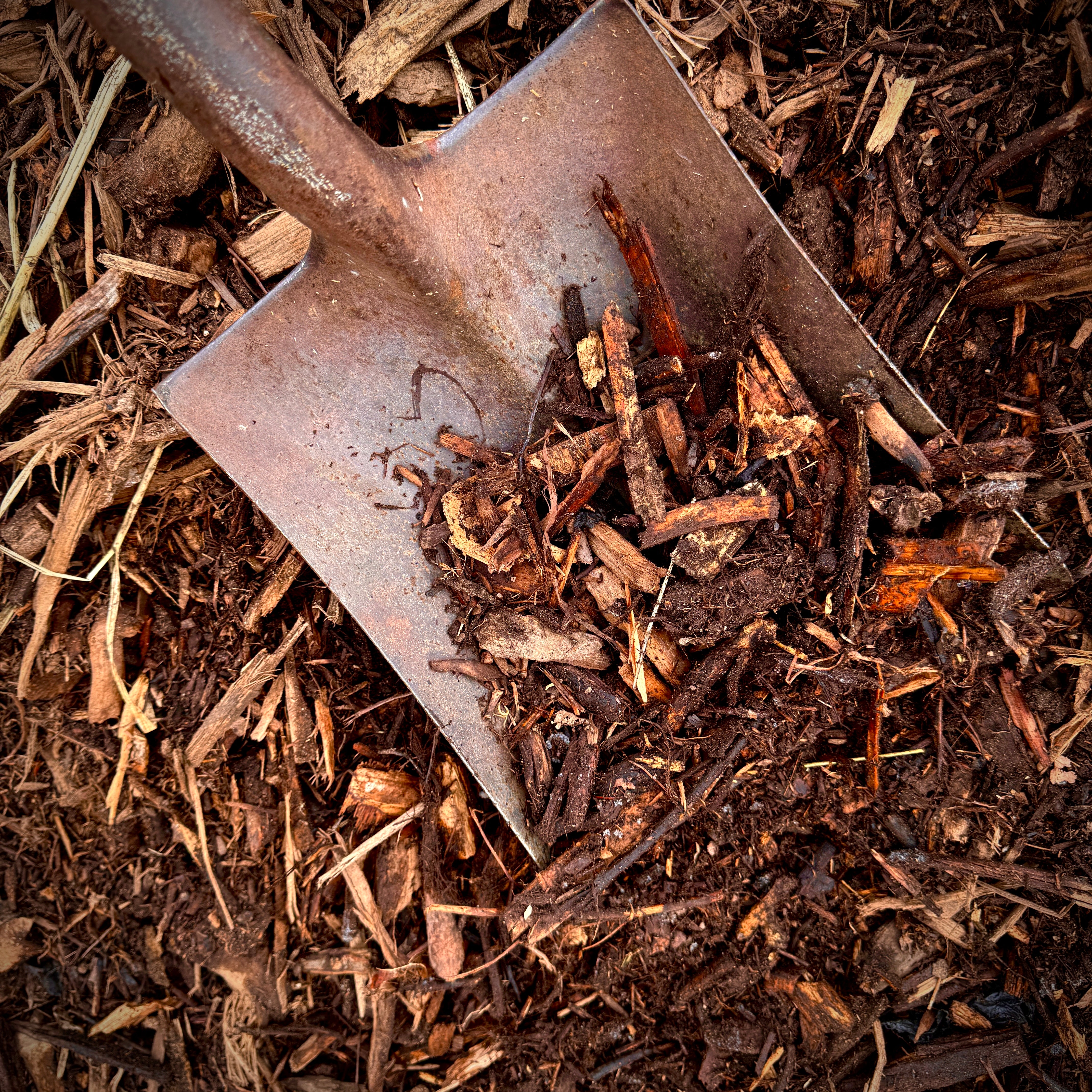
- Moisture Retention:
- Wood chips act as a protective layer, reducing water evaporation.
- Especially useful during hot, dry seasons.
- Consistent moisture benefits plant health.
- Soil Temperature Regulation:
- Wood chips insulate the soil, keeping it cooler in summer and warmer in winter.
- Stable soil temperature promotes healthy plant growth.
- Protects roots from extreme weather conditions.
- Nutrient Contribution:
- As wood chips break down, they release nutrients into the soil.
- Improves soil fertility over time.
- Natural recycling of organic matter.
- Weed Suppression:
- Wood chips create a barrier, preventing weed growth.
- Reduces competition for nutrients.
- Aesthetic benefit: Neat and tidy garden beds.
- Cost-Effective and Sustainable:
- Wood chips are often available for free or at a low cost.
- Utilizes wood waste effectively.
- Environmentally friendly choice.
Remember to apply wood chips in a layer of 2 to 4 inches around your plants, avoiding direct contact with stems. Happy gardening! 🌱🌿🌼
How to Source and Use Fallen Leaves as Free Mulch
When it comes to mulching your garden on a budget, fallen leaves can be a fantastic and free resource. Not only do they provide excellent insulation and moisture retention, but they also add valuable organic matter to your soil as they break down. But how can you source and use fallen leaves effectively as mulch?

- Source Fallen Leaves:
- Rake fallen leaves from your own yard.
- Alternatively, connect with neighbors or community members who have excess leaves to share.
- Layering Technique:
- Spread a layer of leaves around the base of your plants.
- Avoid piling them too thickly to allow for air circulation.
- Benefits of Fallen Leaf Mulch:
- Insulation: Leaves provide natural insulation, keeping soil temperatures stable.
- Moisture Retention: They retain moisture, reducing the need for frequent watering.
- Nutrient Enrichment: As leaves break down, they release valuable nutrients into the soil.
- Weed Suppression: Leaf mulch helps suppress weed growth.
- Consider Shredding:
- Shredding leaves accelerates decomposition.
- Use a mulching mower or leaf blower on the vacuum setting.
- Shredding also prevents matting and allows better air and water penetration.
- Avoid Thick Layers:
- A thin layer of whole leaves is fine.
- Thick layers can block air and water, potentially harming plants.
- Consider the specific needs of your garden when deciding whether to shred leaves.
- Recycle or Compost:
- Add leaves to your compost bin (shredding speeds up breakdown).
- Use leaves for spring mulching or dispose of them according to local regulations.
Remember, fallen leaves are a valuable resource that can benefit both your garden and the environment. Happy gardening! 🌱🍂🌼
Harnessing the Power of Newspaper and Cardboard as Mulch
Newspaper and cardboard may seem like unconventional choices for garden mulch, but they can be highly effective and affordable options for the thrifty gardener. Not only are they readily available materials, but they also offer a range of benefits for your plants and soil.
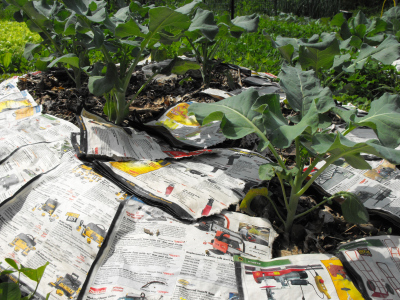
Newspaper and cardboard create a barrier that prevents weed growth.
Existing weeds are smothered, and new ones struggle to emerge.
Reduces the need for frequent weeding.
Both materials retain moisture in the soil.
Helps plants stay hydrated, especially during dry periods.
Conserves water by minimizing evaporation.
Insulating layers of newspaper and cardboard keep soil cool in hot weather.
Prevents extreme temperature fluctuations.
Protects shallow-rooted plants from drying out.
As newspaper and cardboard break down, they release nutrients.
Adds organic matter to the soil.
Improves soil structure and fertility.
Preparation: Remove any glossy or colored sections from newspapers.
Layering: Lay newspaper or cardboard directly on the soil around plants.
Thickness: Apply 2 to 4 layers for effective weed suppression.
Cover with Mulch: Top with a layer of organic mulch (e.g., wood chips) to enhance aesthetics.
Avoid Toxic Ink: Use newspapers printed with soy-based ink.
Wet the Layers: Water the newspaper or cardboard after laying it down.
Avoid Thick Layers: Excessive thickness can hinder water penetration.
Remember to adjust the thickness based on your specific garden needs. Newspaper and cardboard mulch are excellent choices for budget-conscious gardeners who want to improve soil health and reduce weed growth. Happy gardening! 🌱🌿🌼
Unleashing the Power of Straw as an Inexpensive Mulching Option
Straw is a widely available and affordable mulching option that offers numerous benefits for gardeners. It is a post-harvest product made up of dry hollow stems and stalks of grains like wheat, oats, or barley. When used correctly, straw can significantly reduce weeds and the need for watering, while also enriching the soil as it breaks down.
Here are some key benefits of using straw as a mulch:
- Weed Suppression: Straw mulch is effective at preventing weed growth by blocking sunlight and preventing weed seed germination.
- Moisture Retention: Straw helps the soil retain moisture, reducing the need for frequent watering.
- Temperature Regulation: Straw mulch can help regulate soil temperature, keeping it cooler in the summer and warmer in the winter.
- Soil Enrichment: As straw breaks down, it enriches the soil with organic matter, improving its structure and fertility.
- Cost-Effective: Straw is an inexpensive mulching option, making it accessible for gardeners on a budget.
To successfully use straw as a mulch, follow these steps:
- Remove Weeds: Before laying down the straw, ensure that existing weeds are removed.
- Lay Down Newspaper or Cardboard: For pathways, a layer of newspaper or cardboard can be added to further prevent weed growth.
- Spread the Mulch: Apply 3 to 4 inches of straw mulch around vegetable plants and 4 to 6 inches in pathways.
- Monitor and Adjust: Regularly check the effectiveness of the straw mulch and adjust as needed to maintain optimal weed control and moisture retention.
It is important to note that hay should not be used as a mulch, as it contains seeds that can germinate and cause unwanted plants to grow. Instead, use straw, which is a more suitable option for garden mulching.
In conclusion, straw is a versatile and cost-effective mulching option that can help gardeners achieve a lower maintenance space while improving soil health and reducing weeds. By following the steps outlined above, gardeners can effectively harness the power of straw to enhance their gardening experience.
Pine Needles and Cones
Pine needles and cones, often considered as yard waste, can actually be repurposed as an affordable and effective mulch solution. Not only are pine needles abundantly available, but they also offer several benefits for your garden.
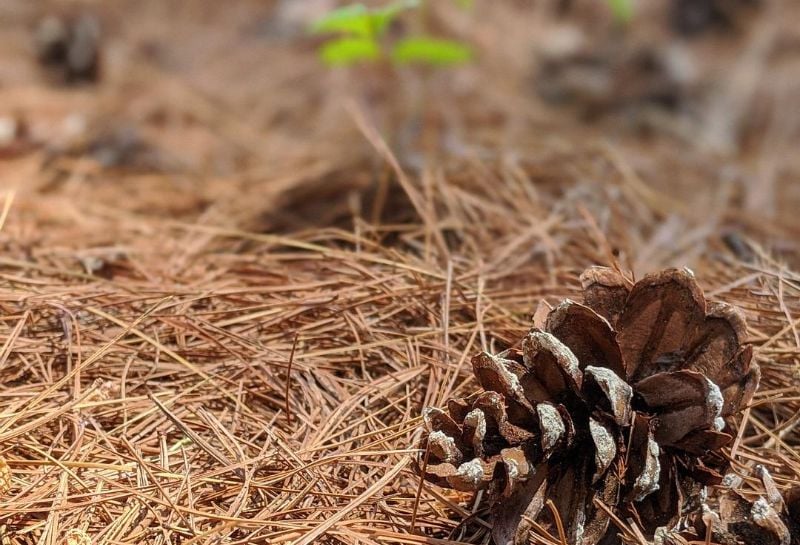
By repurposing this abundant yard waste, you can enjoy the benefits of weed suppression, water conservation, and improved plant health without breaking the bank. Give it a try and witness the transformative power of this budget-friendly mulch option in your own garden.
Utilizing the SuperMoss Black Spruce Pine Cones as mulch in my garden proved to be a delightful experience. These pine cones, sourced from genuine black spruce trees, added an authentic touch of nature to my outdoor space. As I scattered them around my plants, they not only served as a practical mulch but also enhanced the aesthetic appeal of my garden.
Their intricate details and natural brown color complemented the greenery of my plants beautifully. Moreover, knowing that they were responsibly harvested in the USA added to my satisfaction, as I value sustainability in my gardening practices.
Over time, I observed how the pine cones helped retain moisture in the soil, regulate temperature, and deter weeds, all while gradually decomposing and enriching the soil with organic matter. Their versatility and eco-friendliness make them a valuable addition to any garden.
Overall, using the SuperMoss Black Spruce Pine Cones as mulch in my garden not only provided practical benefits but also contributed to the visual charm and environmental sustainability of my outdoor space. I highly recommend them to fellow gardeners looking for an organic and aesthetically pleasing mulching solution.
- Natural Beauty: The SuperMoss Black Spruce Pine Cones offer a touch of nature’s intricate beauty, harvested from iconic black spruce trees. They bring an authentic rustic charm to any décor or arrangement.
- Versatile Decor: These pine cones are not just for the holiday season; they serve as dynamic fillers that blend seamlessly with both traditional and modern décor themes. They can be used in wreaths, centerpieces, floral arrangements, and various DIY projects.
- Texture and Hue: The pine cones boast a dynamic texture and rich brown hue, making them a favorite among craft enthusiasts. Their aesthetic appeal enhances the visual appeal of any creative project or arrangement.
- Quality and Quantity: Customers appreciate the quality of the pine cones, as they come in a 19-ounce bag offering ample quantity for multiple uses. Despite some variation in size, they are generally well-received for their appearance and value.
- Size Variation: Some customers have noted that there is a variation in the size of the pine cones, with some being smaller than expected. While this might not be a significant issue for some, others may find it inconvenient for certain projects or arrangements.
- Fragility: A few customers have reported that some pine cones arrived broken or crushed, which could be attributed to fragility during shipping or handling. This could potentially affect the usability and aesthetic appeal of the product.
- Limited Application: While the pine cones are versatile in their decorative use, some customers have found them to be too small for certain applications. They may not be suitable for larger-scale décor projects or arrangements requiring larger fillers.
The Art of Using Compost as a Cost-Effective Mulch
Compost is not only an effective way to nourish your plants, but it can also serve as a cost-effective mulching option. This organic matter is rich in nutrients and beneficial microorganisms that promote soil health and plant growth. When used as mulch, compost helps retain moisture, suppress weeds, and regulate soil temperature, all while providing essential nutrients to your plants.
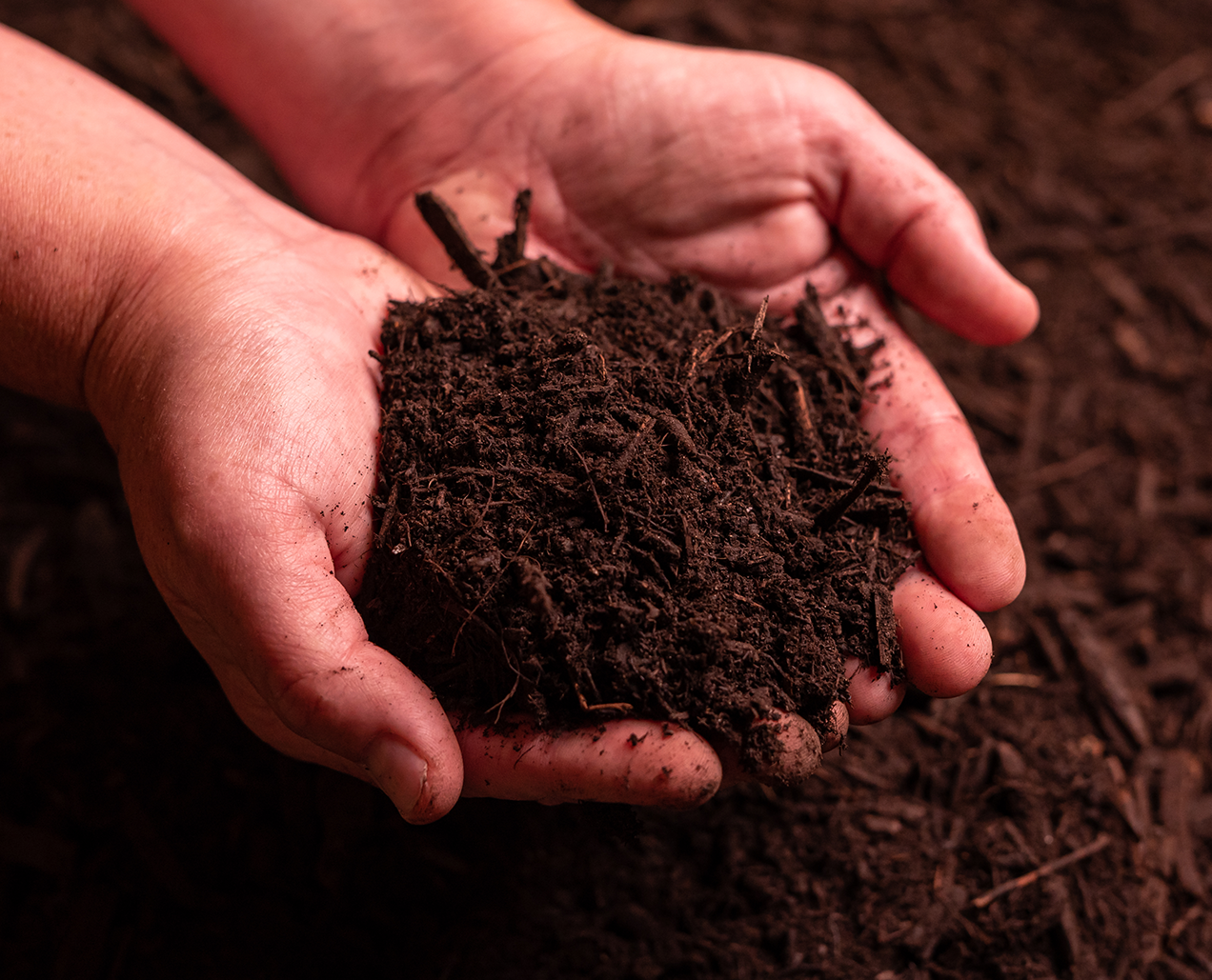
In conclusion, composting not only provides a cost-effective solution for nourishing your plants but also serves as a valuable mulching option. Its ability to improve soil structure, retain moisture, suppress weeds, and promote beneficial microorganisms makes it a versatile and sustainable choice for gardeners looking to maximize their gardening efforts. Incorporating compost into your mulching routine can contribute to the overall health and vitality of your garden while staying mindful of your budget.
Low-Cost Mulch Ideas Using Shredded Paper and Junk Mail
Using shredded paper and junk mail as mulch can be a cost-effective solution for gardeners. Here are some tips on how to use these materials as mulch:
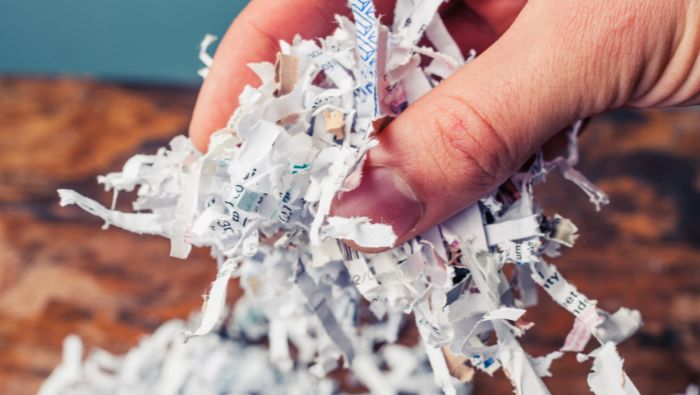
- Shredded Paper: Shredded paper from a paper shredder can be used as mulch around trees, shrubs, and in the garden. It provides warmth, protection, and nutrients for plant roots. However, avoid using glossy or colored shredded paper, as they may not break down readily and may contain materials that aren’t good for the soil. After spreading out the shredded paper, cover it with compost or other mulch to keep it from blowing away.
- Junk Mail: Junk mail can also be used as a source of free cardboard for mulching. Wet old newspaper without shredding it can be laid down in beds as a preventative mulch, though it will decompose rather quickly.
- Paper Bags: Broken paper bags from home improvement or grocery stores can be used as mulch, as they work much like wet newspaper but are a bit more durable.
- Compost: Compost can be used as a substitute for bark or woodchips to mulch trees and shrubs, providing a more balanced C:N ratio for microbes to thrive. It can also be used as a top-dressing for ornamental landscapes, improving soil fertility and plant growth.
Using these low-cost mulch ideas can help gardeners conserve moisture, suppress weeds, and improve soil health while staying mindful of their budget.
Utilizing Coffee Grounds and Tea Bags as Budget Mulch
Coffee grounds and tea bags are not only a refreshing way to start your day but can also be a budget-friendly option for mulching your garden. These kitchen waste products, often overlooked by many, can provide several benefits to your plants and soil without breaking the bank.
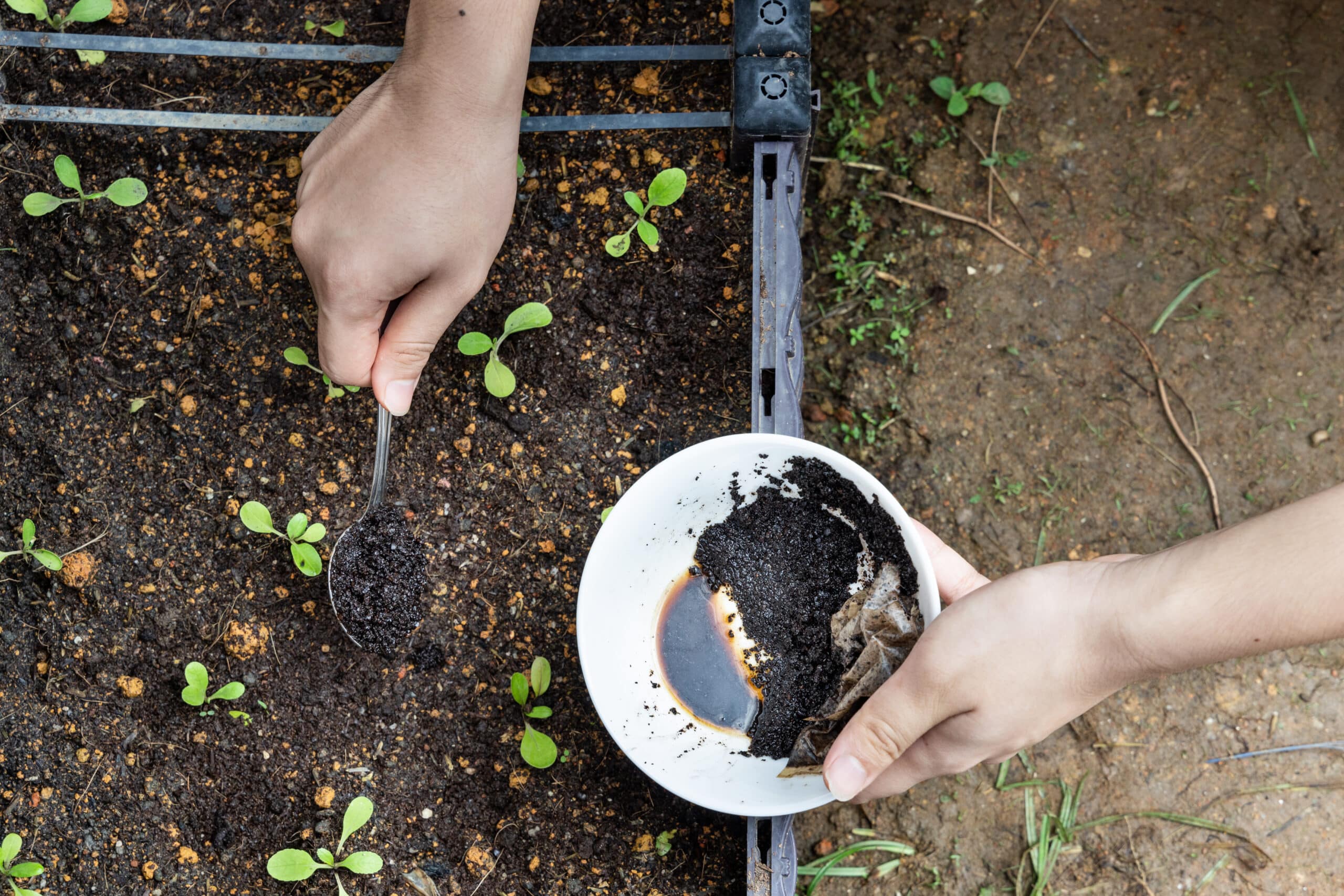
In conclusion, coffee grounds and tea bags can be excellent, budget-friendly options for mulching your garden. Their nutrient content, moisture retention abilities, and pest deterrent qualities make them a valuable addition to any garden. With proper use and moderation, these kitchen waste products can help you achieve a thriving and beautiful garden without compromising your budget. So, why not enjoy your morning cup of coffee or tea and give your garden a boost at the same time?
The Hidden Gem of Using Seaweed as an Economical Mulch
Seaweed may not be the first thing that comes to mind when considering mulching options for your garden, but it is indeed a hidden gem in the world of economical mulch. With its numerous benefits and cost-effective nature, seaweed can be a valuable addition to your gardening routine.

- Using seaweed as a mulch and soil amendment in gardening offers various benefits.
- Seaweed is composed of algae and marine plants, enriching the soil with nitrogen, potassium, magnesium, calcium, and trace elements.
- It moderates soil temperature, reduces water loss, prevents weed germination, and repels slugs.
- Seaweed can be applied as a 3 to 4-inch mulch layer in vegetable beds and flower borders.
- It can also be mixed into the soil like compost or manure to enhance mineral content and improve soil structure.
- Seaweed is neutral to slightly alkaline and does not substantially alter soil pH unless already too alkaline.
- Harvested seaweed should be rinsed of salt before use.
- Gathering seaweed mid-beach is recommended for drier and bug-free seaweed.
- Using fine seaweed pieces is easier for mulching, while onion sacks or woven poly bags are suitable for collection.
- Applying seaweed within 36 hours of gathering is advised to prevent it from breaking down too quickly.
Overall, seaweed is an economical choice for mulching that provides multiple benefits for your garden while also promoting sustainability and environmental consciousness.
Exploring the Benefits of Nut Shells as a Cheap Mulch Option
Nut shells, such as those from walnuts, almonds, and hazelnuts, may not be the first thing that comes to mind when considering mulch options for your garden. However, these humble shells offer a range of benefits that make them a viable and cost-effective choice.
So, next time you’re considering mulching options for your garden, don’t overlook the benefits of nut shells. Not only are they readily available and affordable, but they also provide effective weed control, insulation, and natural fertilization. By incorporating nut shells into your mulch rotation, you can create a thriving garden that’s both budget-friendly and environmentally sustainable.
Affordable Mulching Solutions with Old Hay and Straw Bales
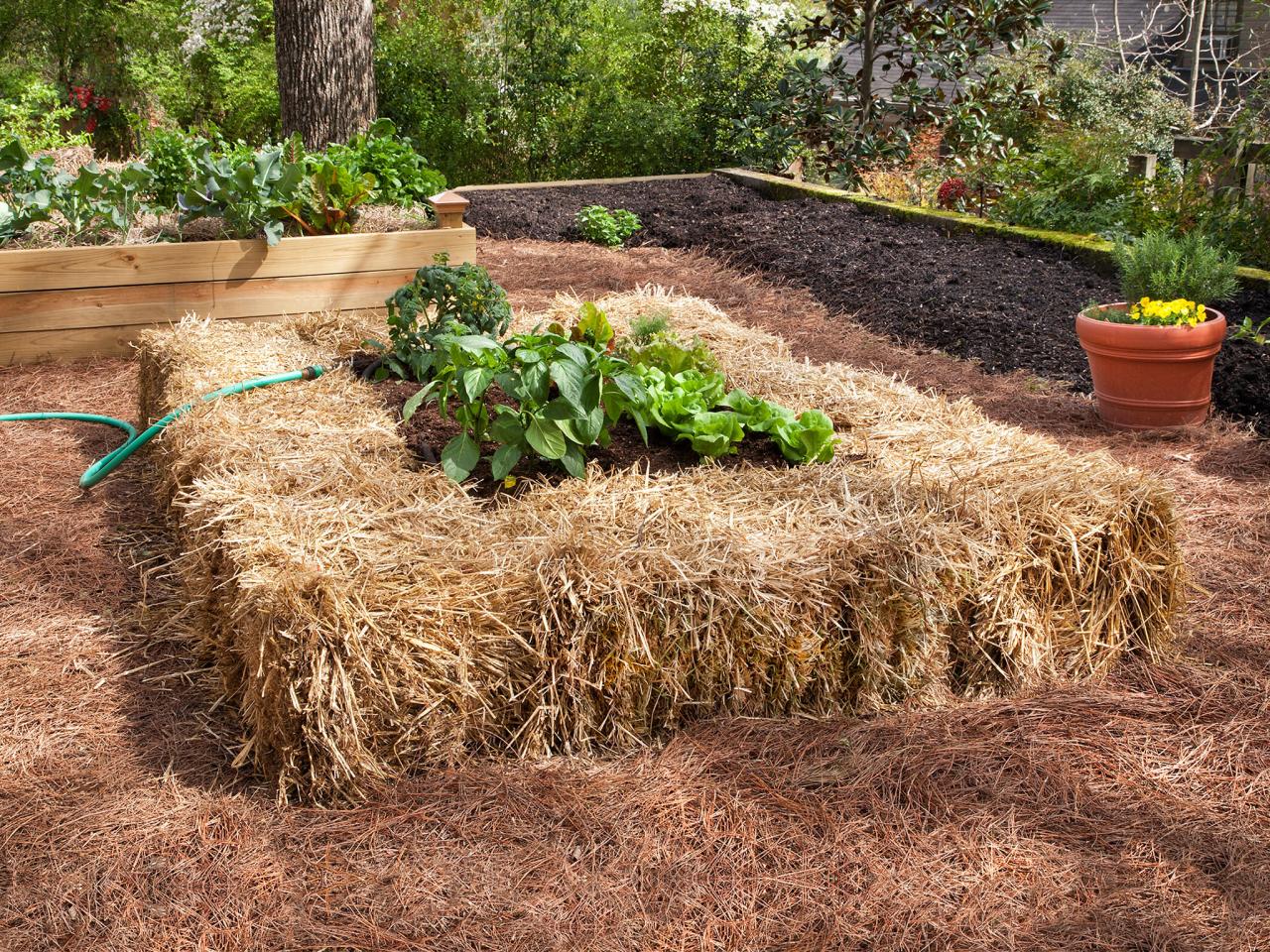
- Old hay and straw bales act as excellent insulators when used as mulch, regulating soil temperature and retaining moisture, which is beneficial in harsh climates or during droughts.
- They help suppress weeds by creating a mulch layer that minimizes weed growth, reducing the need for labor-intensive weed control methods.
- These materials slowly break down over time, enriching the soil with organic matter and essential nutrients, promoting healthy root development and enhancing nutrient availability to plants.
- The decomposition of old hay and straw bales attracts beneficial organisms like earthworms, further enriching the soil and improving its structure.
- To use old hay and straw bales as mulch, ensure they are free from weed seeds to prevent unwanted plant growth. Spread a thick layer (about 4-6 inches) around plants, leaving a gap around each plant base to prevent crown rot.
Stay tuned for more budget-friendly mulching ideas to help you create a beautiful and thriving garden without breaking the bank!
DIY Mulch: How to Create Your Own Inexpensive Mulch Blend
Creating your own inexpensive mulch blend is not only a cost-effective solution but also a great way to customize your garden’s needs. By blending different materials, you can tailor the mulch to your specific plants, soil conditions, and climate.
- Control Over Organic Matter:
- Making your own mulch blend allows you to control the organic matter content.
- This positively impacts soil health and fertility.
- Materials for Mulch Blend:
- Utilize readily available materials from your garden:
- Grass Clippings: These provide a protective layer, retain moisture, and suppress weeds.
- Fallen Leaves: Break down over time, enriching the soil with nutrients.
- Wood Chips: Serve as effective mulch.
- Incorporate household waste:
- Shredded Paper: Effective mulch material.
- Cardboard: Helps suppress weeds.
- Coffee Grounds: Adds organic matter and promotes sustainability.
- Utilize readily available materials from your garden:
- Benefits of DIY Mulch:
- Cost Savings: Creating your own mulch is economical.
- Soil Health Improvement: Mulch enriches the soil.
- Customization: Tailor the blend to your garden’s unique requirements.
Remember to research your plant’s specific needs and get creative with your inexpensive mulch blend! Your garden will thrive. 🌱🌿
Watch video for more information:
FAQ
What are some benefits of mulching your garden on a budget?
Mulching your garden on a budget has several benefits. It helps retain moisture in the soil, suppresses weed growth, regulates soil temperature, and improves overall soil health.
Are there any natural mulch alternatives for a thrifty gardener?
Yes, there are several natural mulch alternatives that are inexpensive. Some examples include grass clippings, fallen leaves, newspaper, cardboard, straw, pine needles and cones, coffee grounds, tea bags, seaweed, nut shells, old hay, and straw bales.
How can I recycle household waste as mulch?
There are creative ways to recycle household waste as mulch. For example, you can use shredded paper and junk mail, coffee grounds, tea bags, and even nut shells as mulch in your garden.
How can I use grass clippings as a low-cost mulch option?
Grass clippings can be used as a low-cost mulch option by spreading a thin layer (about an inch) of clippings around your plants. Avoid piling it too thickly to allow for proper air circulation.
How do I source and use fallen leaves as free mulch?
Fallen leaves can be collected from your yard or neighborhood for free. Shred the leaves and spread them around your garden beds as mulch. Make sure to avoid using diseased or pest-infested leaves.
How can I harness the power of newspaper and cardboard as mulch?
Newspaper and cardboard can be used as mulch by layering them around plants. Wet them thoroughly, overlap the sheets, and weigh them down with rocks or soil to prevent them from blowing away.
Can I use straw as an inexpensive mulching option?
Yes, straw is an inexpensive mulching option. Spread a thin layer of straw around your plants to help retain moisture, suppress weeds, and regulate soil temperature.
What are some affordable mulch solutions using pine needles and cones?
Pine needles and cones can be used as affordable mulch. Simply spread them around your plants to add a natural and attractive layer of mulch.
How can compost be used as a cost-effective mulch?
Compost can be used as a cost-effective mulch by spreading a layer of well-decomposed compost around your plants. It adds nutrients to the soil and helps retain moisture.
Can shredded paper and junk mail be used as low-cost mulch?
Yes, shredded paper and junk mail can be used as low-cost mulch. Spread a layer of shredded paper or junk mail around your plants to suppress weeds and retain moisture in the soil.
How can coffee grounds and tea bags be utilized as budget mulch?
Coffee grounds and tea bags can be utilized as budget mulch by sprinkling the grounds around your plants or tearing open the tea bags and spreading the leaves. They act as natural fertilizers and help improve soil quality.
What are the benefits of using seaweed as an economical mulch?
Seaweed is an economical mulch that provides many benefits. It enriches the soil with nutrients, improves soil structure, helps retain moisture, and repels pests.
Can nut shells be used as a cheap mulch option?
Yes, nut shells can be crushed and used as a cheap mulch option. Spread them around your plants to help retain moisture and add a natural aesthetic to your garden.
How can old hay and straw bales be used as affordable mulching solutions?
Old hay and straw bales can be used as affordable mulching solutions by breaking them apart and spreading the straw or hay around your plants. They help retain moisture and suppress weeds.
How do I create my own inexpensive mulch blend?
To create your own inexpensive mulch blend, you can mix various materials mentioned in the article, such as grass clippings, fallen leaves, shredded paper, coffee grounds, and nut shells. Experiment with different combinations until you find the blend that suits your garden’s needs.

Studied Agricultural Engineering-Plant Protection at University of California, Davis.
Head of Content writing team at Southelmontehydroponics.com

